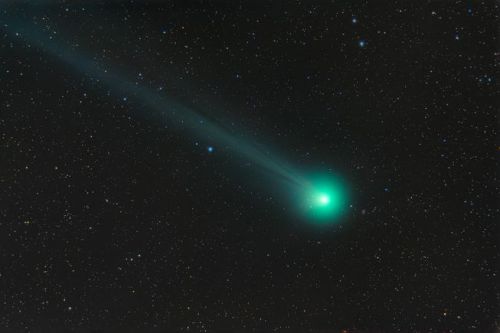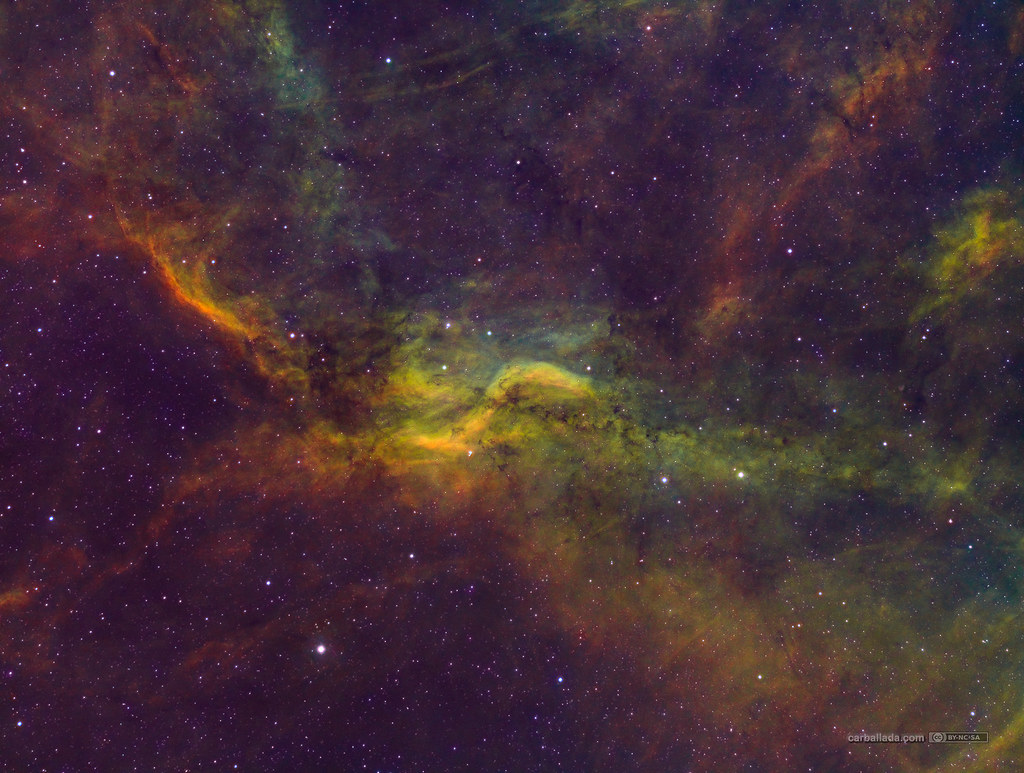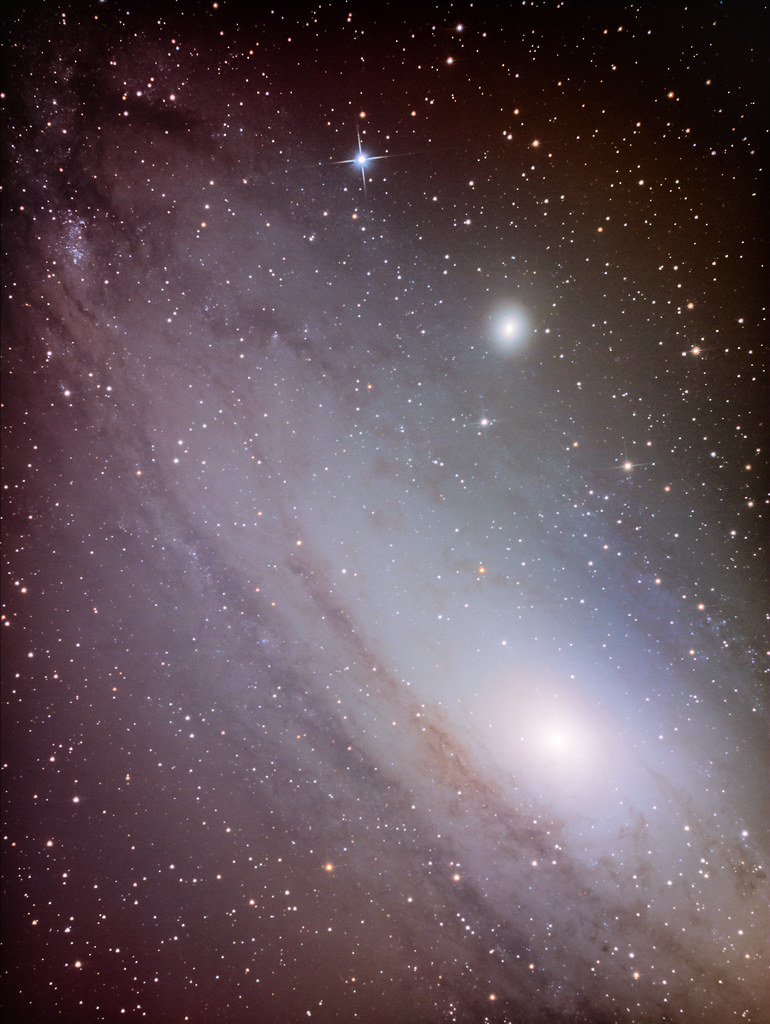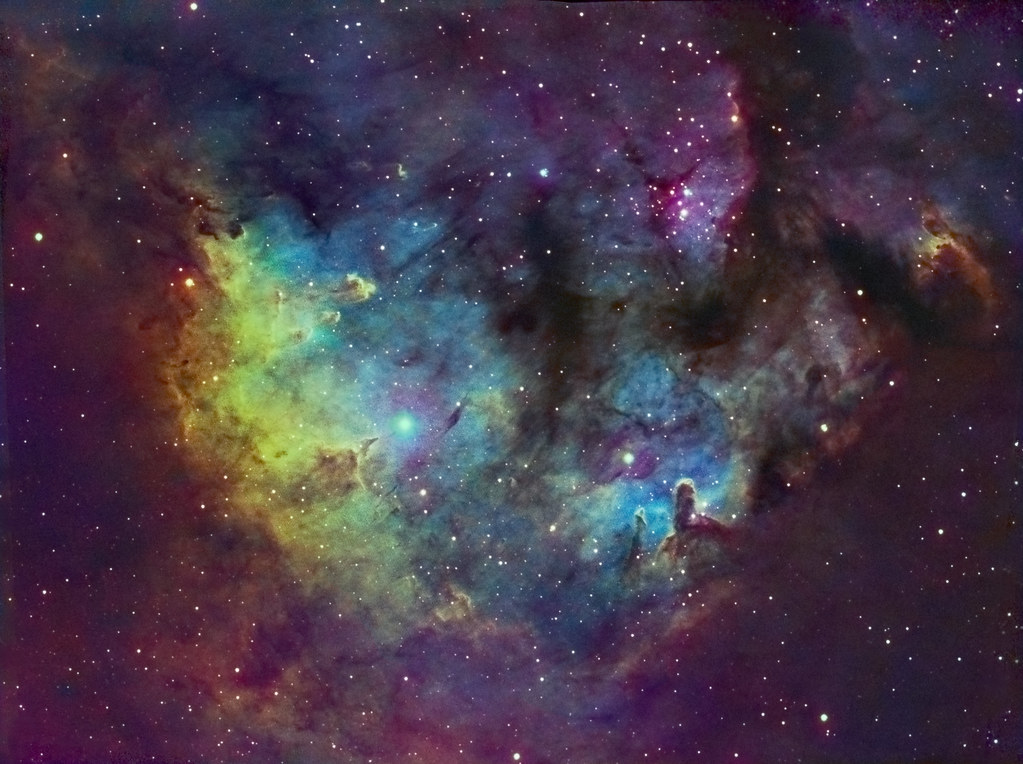#skywatcher
#sun #sunny #sunnyday #pvc #pvcdress #sunnydays #sunlight #light #sunshine #shine #nature #sky #skywatcher #thesun #sunrays #photooftheday #beautiful #beautifulday #weather #summer #goodday #goodweather #instasunny #instasun #instagood #clearskies #clearsky #blueskies #lookup #bright #brightsun
Post link
Propeller Nebula (Simeis 57) in HSTrgb by Jose Carballada
Via Flickr:
www.astrobin.com/368569 The peculiar nebula Simeis 57. Simeis 57 (also known as HS 191 and C 191) is a high surface-brightness nebula in the constellation Cygnus. The distance nor the source of excitation of Simeis 57 are known.
Cederblad 214 by Ken Mackintosh
Via Flickr:
Also designated Sharpless 171, this is a young irregular emission nebula and star forming region of about 40 light-years across, located some 3,300 light-years away at the edge of a giant molecular cloud toward the northern constellation Cepheus. Cosmic pillars of cold molecular gas and clouds of dark dust lie within. Powering the nebular glow are the young, hot stars of the Berkeley 59 cluster. This includes one of the hottest stars discovered in the vicinity of our Sun, namely BD+66 1673, an eclipsing binary system containing a very bright star with a luminosity ~100000 times that of the Sun. Its been a while since my last astro image due to short summer nights, the mainly bad weather since then and work and other commitments, but good to get posting again. The data for this image was gathered a few months back over 6 separate nights during June through August 2012, just took a while to get to the processing! Tech details below: Skywatcher MN190 (@F5.3) Mount - EQ6 Starlight Xpress SXVR-H18 @ -20 degs QHY5 PHD guiding, guidesope Celestron ED80 Ha - Baader 7nm - 20x15min bin1x1 S2 - Baader 8nm - 16x15min bin2x2 O3 - Baader 8nm - 16x15min bin2x2 Total time 13h HST mapping: Red - SII, Green - Ha, Blue - OIII Captured in Nebulosity 2 Calibration, stack and DDP in Images Plus Curves + all other processing PS CS3

had the joy to work on @gatetoglimmer’s adorable etherean, Comet!! Thank you so much for commission me!








